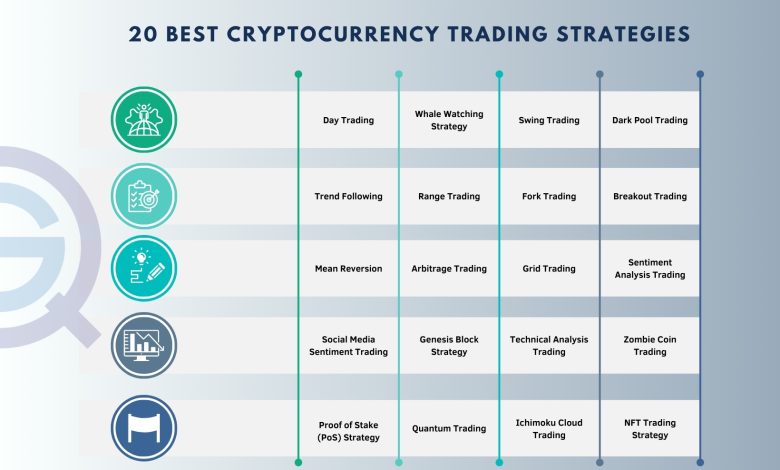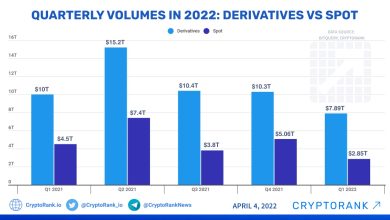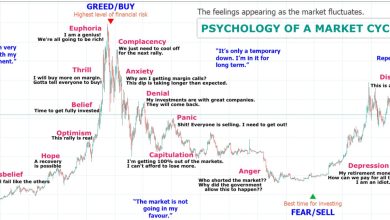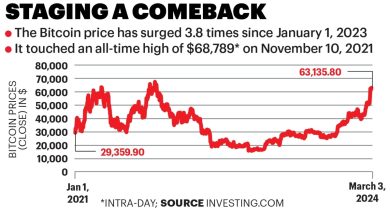Analyzing Technical Indicators in Crypto Trading Strategies

- Understanding the role of technical indicators in crypto trading
- Commonly used technical indicators in cryptocurrency trading
- How to interpret technical indicators for successful trading strategies
- Combining multiple technical indicators for more accurate predictions
- The impact of market volatility on technical indicators in crypto trading
- Backtesting and optimizing trading strategies using technical indicators
Understanding the role of technical indicators in crypto trading
Technical indicators play a crucial role in crypto trading strategies by providing traders with valuable insights into market trends and potential price movements. These indicators are mathematical calculations based on historical price, volume, or open interest data. By analyzing these indicators, traders can make informed decisions about when to buy or sell a particular cryptocurrency.
There are various types of technical indicators that traders can use, such as moving averages, relative strength index (RSI), and Bollinger Bands. Each indicator has its unique way of interpreting market data and can help traders identify trends, reversals, or overbought/oversold conditions in the market. By combining different indicators, traders can create a comprehensive trading strategy that suits their risk tolerance and investment goals.
It is essential for traders to understand how technical indicators work and how to interpret their signals correctly. While technical indicators can provide valuable insights, they are not foolproof and should be used in conjunction with other forms of analysis, such as fundamental analysis or market sentiment. Traders should also be aware of the limitations of technical indicators and not rely solely on them when making trading decisions.
Commonly used technical indicators in cryptocurrency trading
When it comes to analyzing technical indicators in cryptocurrency trading strategies, there are several commonly used tools that traders rely on to make informed decisions. These indicators help traders identify trends, patterns, and potential entry or exit points in the market.
One of the most popular technical indicators used in crypto trading is the Moving Average (MA). This indicator helps traders smooth out price data to identify trends over a specific period. By analyzing the relationship between short-term and long-term moving averages, traders can determine potential buy or sell signals.
Another widely used technical indicator is the Relative Strength Index (RSI). The RSI measures the speed and change of price movements, indicating whether a cryptocurrency is overbought or oversold. Traders use this information to anticipate potential price reversals and adjust their trading strategies accordingly.
Bollinger Bands are also commonly used in cryptocurrency trading. These bands consist of a simple moving average and two standard deviations, creating a channel around the price action. Traders use Bollinger Bands to identify volatility and potential breakout points in the market.
Other technical indicators that traders often incorporate into their analysis include the Moving Average Convergence Divergence (MACD), the Stochastic Oscillator, and the Fibonacci Retracement levels. Each of these indicators provides unique insights into market dynamics and can help traders make more informed decisions.
By combining these technical indicators and using them in conjunction with fundamental analysis, traders can develop robust trading strategies that increase their chances of success in the highly volatile cryptocurrency market.
How to interpret technical indicators for successful trading strategies
When it comes to analyzing technical indicators in crypto trading strategies, it is essential to understand how to interpret them effectively. Technical indicators are tools used by traders to gain insight into the market trends and make informed decisions. By understanding how these indicators work, traders can develop successful trading strategies that can help them maximize profits.
One key aspect of interpreting technical indicators is to look for patterns and trends in the data. This can help traders identify potential entry and exit points for their trades. For example, if a moving average indicator shows an upward trend, it may indicate that the price of a cryptocurrency is likely to continue rising. On the other hand, if a relative strength index (RSI) indicator shows that a cryptocurrency is overbought, it may be a sign that the price is due for a correction.
Another important factor to consider when interpreting technical indicators is to look for confirmation from multiple indicators. By using a combination of different indicators, traders can reduce the risk of making decisions based on false signals. For example, if both the MACD and the stochastic oscillator indicate a buy signal for a particular cryptocurrency, it may provide stronger confirmation than relying on just one indicator alone.
It is also crucial for traders to consider the timeframe over which they are analyzing technical indicators. Different indicators may provide different signals depending on whether they are used on a short-term or long-term basis. By understanding the strengths and limitations of each indicator, traders can tailor their strategies to suit their trading style and goals.
In conclusion, interpreting technical indicators is a crucial skill for successful crypto trading strategies. By understanding how to analyze these indicators effectively, traders can make informed decisions that can help them navigate the volatile cryptocurrency market and achieve their financial goals.
Combining multiple technical indicators for more accurate predictions
When it comes to analyzing technical indicators in crypto trading strategies, combining multiple indicators can lead to more accurate predictions. By using a variety of indicators, traders can gain a more comprehensive understanding of market trends and potential price movements.
One approach is to use a combination of trend-following indicators, such as moving averages, with momentum indicators like the Relative Strength Index (RSI) or the Moving Average Convergence Divergence (MACD). This can help traders confirm trends and identify potential entry and exit points.
Another strategy is to combine volume-based indicators, such as the On-Balance Volume (OBV) or the Chaikin Money Flow, with volatility indicators like Bollinger Bands. This can provide insights into market strength and potential price fluctuations.
By integrating different types of technical indicators, traders can reduce the risk of relying on a single indicator that may provide false signals. It is important to experiment with different combinations and adjust strategies based on market conditions to improve the accuracy of predictions.
The impact of market volatility on technical indicators in crypto trading
Market volatility can have a significant impact on technical indicators used in crypto trading strategies. When the market is highly volatile, technical indicators may provide conflicting signals, making it challenging for traders to make informed decisions. This can lead to increased risk and potential losses for traders who rely solely on technical analysis.
One of the key technical indicators affected by market volatility is the moving average. Moving averages are used to smooth out price data and identify trends. However, in volatile markets, moving averages may lag behind current price movements, leading to delayed signals and false breakouts. Traders should be cautious when using moving averages in volatile market conditions.
Another technical indicator that can be impacted by market volatility is the Relative Strength Index (RSI). The RSI is used to identify overbought or oversold conditions in the market. In highly volatile markets, the RSI may give false signals due to rapid price fluctuations. Traders should consider using additional indicators or adjusting the parameters of the RSI to account for market volatility.
Backtesting and optimizing trading strategies using technical indicators
When it comes to analyzing technical indicators in crypto trading strategies, backtesting and optimizing are crucial steps in ensuring the effectiveness of your approach. Backtesting involves testing a strategy using historical data to see how it would have performed in the past. This allows traders to evaluate the viability of their strategies before risking real money in the market.
Optimizing trading strategies using technical indicators involves fine-tuning the parameters of the indicators to maximize profitability. By adjusting settings such as the period length or threshold values, traders can improve the performance of their strategies. It is essential to strike a balance between over-optimizing, which can lead to curve-fitting, and under-optimizing, which may result in missed opportunities.
Using backtesting and optimization together can help traders identify the most effective technical indicators for their specific trading style and goals. By testing different combinations of indicators and parameters, traders can refine their strategies to achieve better results in the live market. It is important to regularly review and adjust strategies based on new market conditions and data to stay ahead of the curve.





